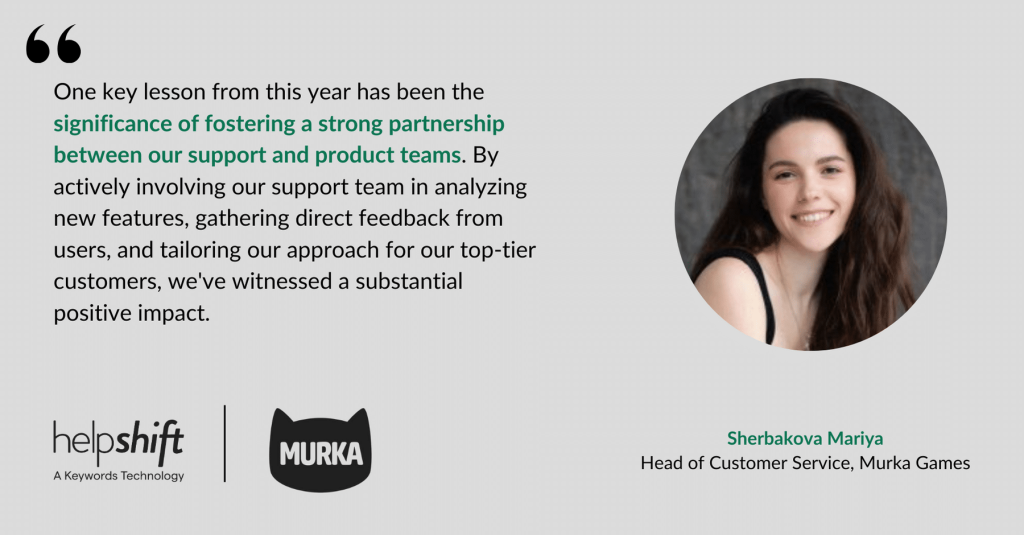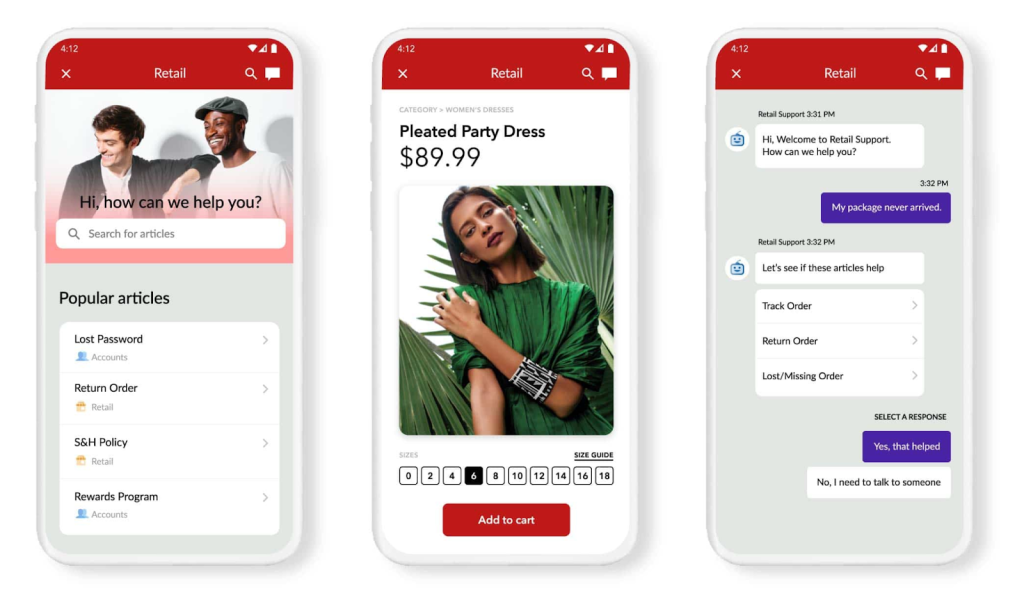In an era defined by automation and digital interactions, the human touch remains a powerful differentiator. Customers today crave more than just efficient transactions; they yearn for genuine connections and personalized experiences that make them feel valued and understood. This is where personalized customer service steps in, transforming fleeting interactions into lasting relationships that fuel loyalty and drive business growth.
What is Personalized Customer Service?
Personalized customer service transcends basic interactions and offers a unique, tailored experience that reflects each individual’s needs and preferences. It’s about understanding their purchase history, browsing habits, and past interactions to craft relevant communications, proactive support, and solutions that resonate deeply.
Imagine receiving product recommendations based on your past purchases, getting greeted by a customer service representative who remembers your pet’s name, or experiencing a website that suggests items you genuinely might be interested in. That’s the essence of personalized customer service – creating a memorable journey that feels genuine, understood, and ultimately, valued.
7 Key Benefits of Personalizing Your Customer Service
Personalized customer service isn’t just a trendy phrase; it’s a strategic approach with demonstrably positive outcomes. Let’s delve into the key benefits:
- Soaring Customer Satisfaction. Imagine a scenario where a customer’s preferred name, past purchases, or even their favorite hobbies are effortlessly remembered. With 76% of B2B and 80% of B2C buyers expecting companies to understand their unique needs and expectations, the demand for personalization is undeniable, underlining the potential consequences of missing the mark.
- Informed Decisions, Empowered Actions. Forget one-size-fits-all solutions. By leveraging customer data, you can offer targeted recommendations, proactive support, and relevant content, ensuring a smooth journey at every touchpoint. This translates to increased customer lifetime value and reduced churn.
- Loyalty and Advocacy: Personalized interactions create memorable experiences that differentiate your brand. Customers who feel valued become vocal advocates, driving organic growth through positive word-of-mouth referrals. This is priceless marketing that resonates deeply with potential customers.
- Increased Sales and Revenue. By recommending relevant products, providing targeted offers, and addressing pain points with personalized solutions, you can guide customers toward purchases they’ll appreciate, ultimately leading to increased sales and revenue.
- Competitive Advantage. In today’s crowded market, offering personalized service can differentiate your brand and set you apart from competitors who rely on generic approaches. This can attract new customers and retain existing ones more effectively.
- Enhanced Brand Reputation. When you demonstrate you care about individual customers and cater to their specific needs, your brand image improves. People perceive you as a company that listens, understands, and goes the extra mile, leading to positive online reviews and increased brand trust.
- Reduced Customer Effort. Personalized service helps anticipate customer needs and address them proactively. This reduces the effort they have to exert to find information, resolve issues, or make purchases, resulting in a more convenient and enjoyable experience.
10 Steps to Deliver Personalized Service to Your Customers
By following these 10 steps and embracing a continuous improvement mindset, you can create a personalized customer service experience that fosters loyalty and drives growth for your business.
Step 1: Paint a Detailed Portrait of Your Customers
Go beyond just numbers and transactions. Gather clues from diverse data sources like purchases, website interactions, social media comments, and even surveys. Try to build a vibrant mosaic of each customer, understanding their unique story, preferences, and even hidden desires. Use a CRM or customer experience platform to consolidate this information, creating a 360-degree view that empowers you to segment your audience and deliver targeted communications and offers that resonate on a deeper level.
Step 2: Become a Customer Whisperer
Train your team to listen not just to words, but also to emotions and unspoken needs. Encourage open communication through surveys, polls, and social media interactions. Be the “customer whisperer” who can understand what customers truly desire, even if they haven’t explicitly voiced it. By actively listening and seeking feedback, you gain valuable insights that can inform your personalization strategies and ensure they stay relevant and impactful.
Step 3: Talk Like a Friend, Not a Robot
Personalized emails are powerful, but when they read like generic templates, they fall flat. Instead of relying on cookie-cutter formats, inject warmth, humor, or even local references based on what you know about your customers when appropriate. And of course, avoid using robotic language. Remember, humans connect with humans, not automated messages.
Step 4: Equip Your Team with Empathy Superpowers
Invest in training that equips your customer service team with active listening skills, the ability to understand customer emotions, and the finesse to resolve issues efficiently. Empower them to make decisions on the spot, offering personalized solutions that go beyond scripted responses. Foster a culture of empathy and customer-centricity within your team, reminding them that they are the champions who can truly make a difference.
Step 5: Create a Cohesive Omnichannel Strategy
Imagine a customer browsing your website for running shoes and receiving personalized recommendations in-store based on their online behavior. Or, picture them seeing the same enticing promotion for a new product on their mobile app, website, and even in your physical store. That’s the power of omnichannel consistency! In practice, this means ensuring a seamless and personalized experience across all touchpoints, whether online, in-store, or through mobile apps. Here are some key elements:
- Data Flow: Data should flow seamlessly between channels, ensuring a unified view of each customer across your entire ecosystem. This empowers personalized service regardless of where the customer interacts with your brand.
- Personalized Recommendations: Leverage customer data to deliver personalized product recommendations across all channels. For instance, suggest complementary items online based on past purchases, or showcase relevant products in-store based on browsing history. A recent Moengage study found that the majority of consumers in the UK and Germany want brands to personalize recommendations based on their purchase history and interests.
- Consistent Pricing and Promotions: Ensure consistent pricing and promotions across all channels to avoid confusion and build trust. Customers shouldn’t feel penalized for choosing one touchpoint over another.
- Unified Communication: Maintain a consistent brand voice and messaging across all channels, fostering a sense of familiarity and trust.
Step 6: Transform Self-Serving Experience
Self-service channels like FAQs, chatbots, and knowledge bases offer convenience, but they don’t have to be impersonal. Inject a touch of personalization to empower customers and enhance their experience. Here’s how:
- Dynamic Content: Utilize dynamic content that adapts to individual needs and past interactions. Instead of suggesting generic instructions to a customer searching the FAQ section for troubleshooting steps, display content tailored to their specific product or issue, based on their browsing history or previous support interactions.
- Personalized Search Results: Leverage search algorithms powered by customer data to deliver relevant results. When a customer enters a query, prioritize articles, guides, or chatbot responses that align with their past purchases, interests, or previous support tickets.
- Suggested Articles: Based on a customer’s current interaction, recommend relevant articles from your knowledge base. For example, if they’re reading about product care, suggest additional articles on maintenance tips or warranty information.
Step 7: Anticipate Needs and Proactively Offer Solutions
Leverage data and predictive analytics to anticipate customer needs and proactively offer solutions before they become issues. By analyzing past behavior, preferences, and trends, you can identify potential pain points or areas where customers may require assistance. This foresight allows you to take proactive steps to address their needs, making the customer experience smoother and more seamless.
Whether it’s recommending relevant products or services, providing helpful resources, or offering timely support, anticipating and fulfilling customer needs demonstrates a high level of care and attention to detail. This proactive approach not only prevents potential problems but also strengthens trust and loyalty, further enhancing the personalized experience for your customers.
Step 8: Personalize Based on Customer Journey Stages
This step focuses on tailoring your personalization approach based on where customers are in their journey with your brand. Here’s how:
- Welcome newcomers with relevant information and offers: Greet new customers with personalized welcome emails or messages based on their signup source (e.g., social media, referral). Highlight popular products for beginners or offer limited-time welcome discounts.
- Re-engage dormant customers with enticing reminders: Identify inactive customers and send personalized communication reminding them of past purchases, showcasing new arrivals relevant to their interests, or offering exclusive reactivation promotions.
- Nurture leads with targeted content and offers: Implement lead nurturing campaigns with personalized email sequences based on downloaded resources, website behavior, or expressed interests. Offer content upgrades, product demos, or consultations tailored to their specific needs.
- Delight loyal customers with exclusive experiences: Show appreciation for your most loyal customers with personalized thank-you notes, early access to new products, or birthday/anniversary surprises based on their purchase history.
- Offer post-purchase personalization for continued engagement: Send personalized emails after purchases with complementary product recommendations, usage tips, or feedback requests based on the purchased item.
Step 9: Co-Create with Your Customers
Involve your customers directly in your personalization efforts. This fosters engagement, builds trust, and provides valuable insights. Here’s how:
- Run personalization polls and surveys. Ask customers directly about their preferences for product recommendations, communication styles, and preferred channels.
- Offer product customization options. Allow customers to personalize products or services to their individual needs.
- Host contests and co-creation campaigns. Gather ideas and feedback through creative contests where customers submit personalized product designs or marketing messages.
- Implement loyalty programs with personalization options. Allow customers to choose their own rewards or benefits based on their preferences.
- Create a customer advisory board. Gather a diverse group of customers to provide ongoing feedback and insights on your personalization strategies.
Step 10: Measure and Continuously Improve
Personalization is not a one-time fix. Experiment with different strategies, track their effectiveness, and iterate constantly. Use A/B testing to compare different approaches and see what resonates best with your customers. Encourage feedback from both customers and employees to identify areas for improvement. Remember, it’s an ongoing journey of discovery and adaptation, not a destination. Embrace the spirit of exploration and continuous learning to ensure your personalization efforts remain effective and evolve alongside your customers’ needs.
Real-World Examples: Inspiration from Industry Leaders
Let’s peek into the strategies of brands making waves with personalized customer service:
- Spotify: Their recommendation engine analyzes listening habits and curates personalized playlists, keeping users engaged and discovering new music. Imagine receiving a “Happy Workout!” playlist with your favorite motivational tunes on a Monday morning, based on your past listening habits.
- Nike: Through their Nike app, they offer personalized product recommendations, loyalty programs, and in-store experiences based on individual preferences and purchase history. Picture a Nike store employee greeting you by name, suggesting sneakers based on your running goals and offering exclusive discounts based on your past purchases.
- Zappos: They are renowned for their legendary customer service, where agents are empowered to go the extra mile to exceed customer expectations and create memorable experiences. Remember sending back shoes that didn’t fit? Imagine a Zappos representative personally calling you to offer alternative suggestions and ensure your satisfaction.
These are just a few examples, and the possibilities are endless. The key is to understand your unique customer base and tailor your personalization efforts accordingly.
Overcoming Challenges and Measuring Success: Navigating the Personalization Journey
Implementing personalized customer service isn’t without its hurdles. Here’s how to navigate them effectively:
- Data Privacy Concerns: Transparency and compliance with data privacy regulations like GDPR and CCPA are paramount. Obtain clear consent from customers for data collection and usage. Build trust by clearly communicating how you use their data and offering them control over their preferences.
- Technological Limitations: Invest in robust data management and security infrastructure. Choose tools that integrate seamlessly with your existing systems and scale as your needs evolve. Don’t try to implement everything at once; start small, pilot your initiatives, and learn from your experiences.
- Lack of Scalability: Start small and iterate gradually. Build personalization capabilities into your overall customer service strategy for sustainable growth. Don’t expect to personalize every interaction overnight; focus on high-impact areas and gradually expand your efforts.
To measure the success of your personalization efforts, track key metrics like:
- Customer satisfaction scores (CSAT): This is a direct measure of how satisfied customers are with your personalized interactions.
- Net Promoter Score (NPS): This metric gauges customer loyalty and their likelihood to recommend your brand to others.
- Customer retention rate: Track how many customers remain with you over time; personalization can help reduce churn.
- Average resolution time: Personalized service should lead to faster and more efficient problem-solving.
- Social media engagement and sentiment: Monitor how customers are talking about your brand online; personalized interactions can generate positive buzz.
By tracking these metrics, you can gauge the impact of your personalization efforts and make adjustments as needed.
The Future of Personalized Customer Service: Embracing Continuous Innovation
The landscape of personalized customer service is constantly evolving. Stay ahead of the curve by:
- Investing in Artificial Intelligence (AI): Utilize AI-powered chatbots for more advanced interactions and predictive analytics to anticipate customer needs before they arise. Imagine a chatbot that not only answers your questions but also suggests relevant products or services based on your past interactions.
- Exploring Virtual Reality (VR) and Augmented Reality (AR): Immerse customers in personalized product experiences and provide remote support through these emerging technologies. Imagine trying on clothes virtually or receiving personalized repair instructions through AR on your smartphone.
- Prioritizing Customer Feedback: Continuously gather and analyze customer feedback to refine your personalization strategies and adapt to changing preferences. Make feedback collection a seamless part of your customer experience and actively listen to what your customers are telling you.
By embracing continuous innovation and a customer-centric approach, you can ensure your personalized customer service remains at the forefront, driving loyalty, growth, and success in the years to come.
Conclusion
In today’s competitive environment, personalized customer service isn’t a luxury; it’s a necessity. By understanding your customers, leveraging technology strategically, and empowering your team to deliver exceptional experiences, you can build lasting relationships, cultivate loyalty, and drive sustainable business growth. Remember, personalization is a journey, not a destination. Embrace continuous learning, innovation, and a customer-centric approach to thrive in the future of customer service.




